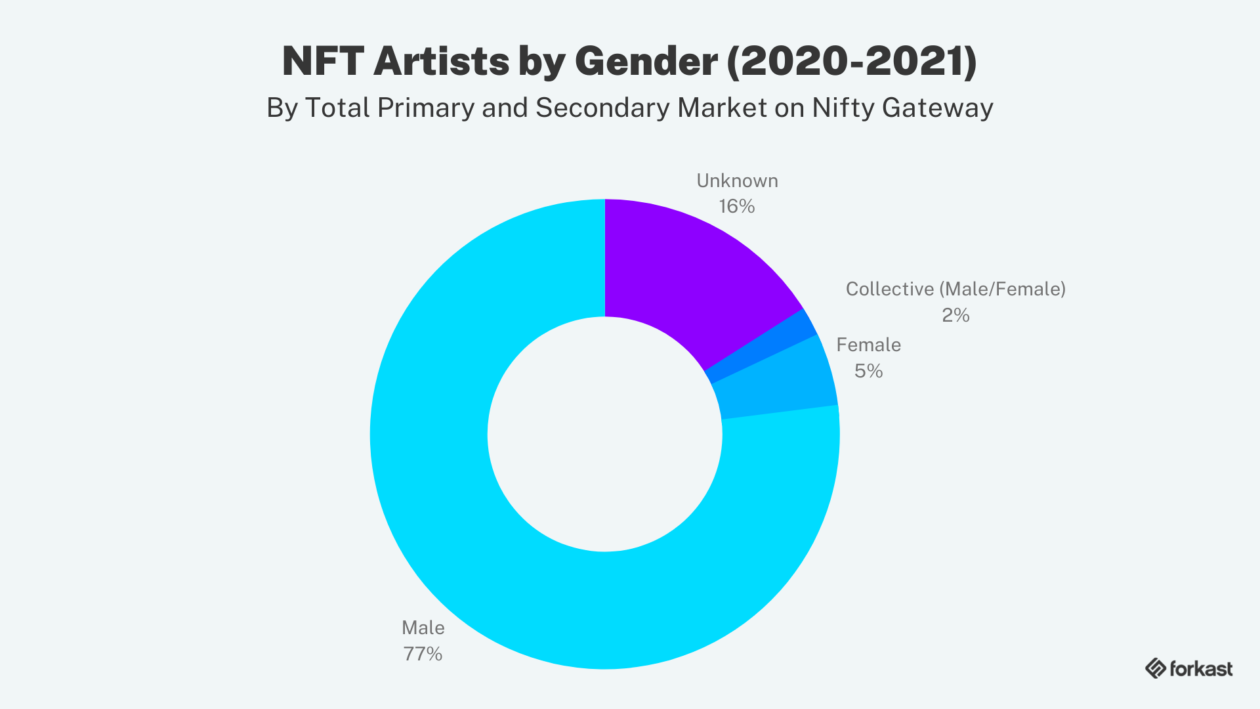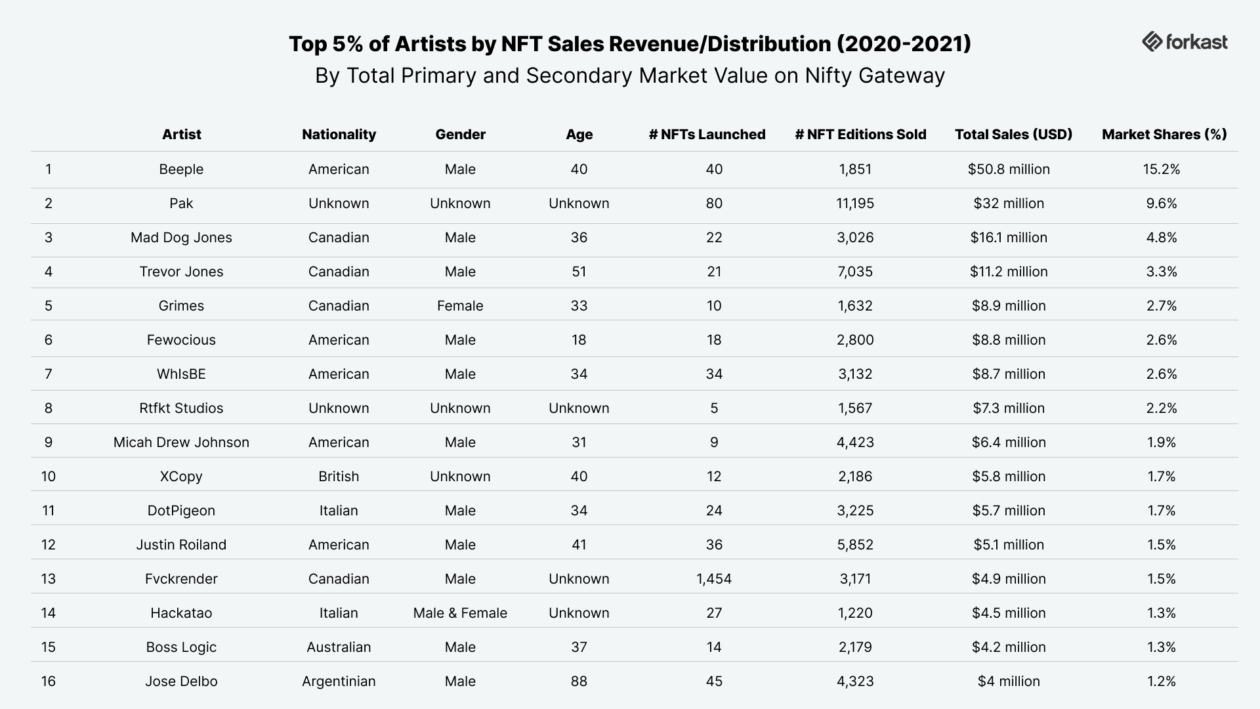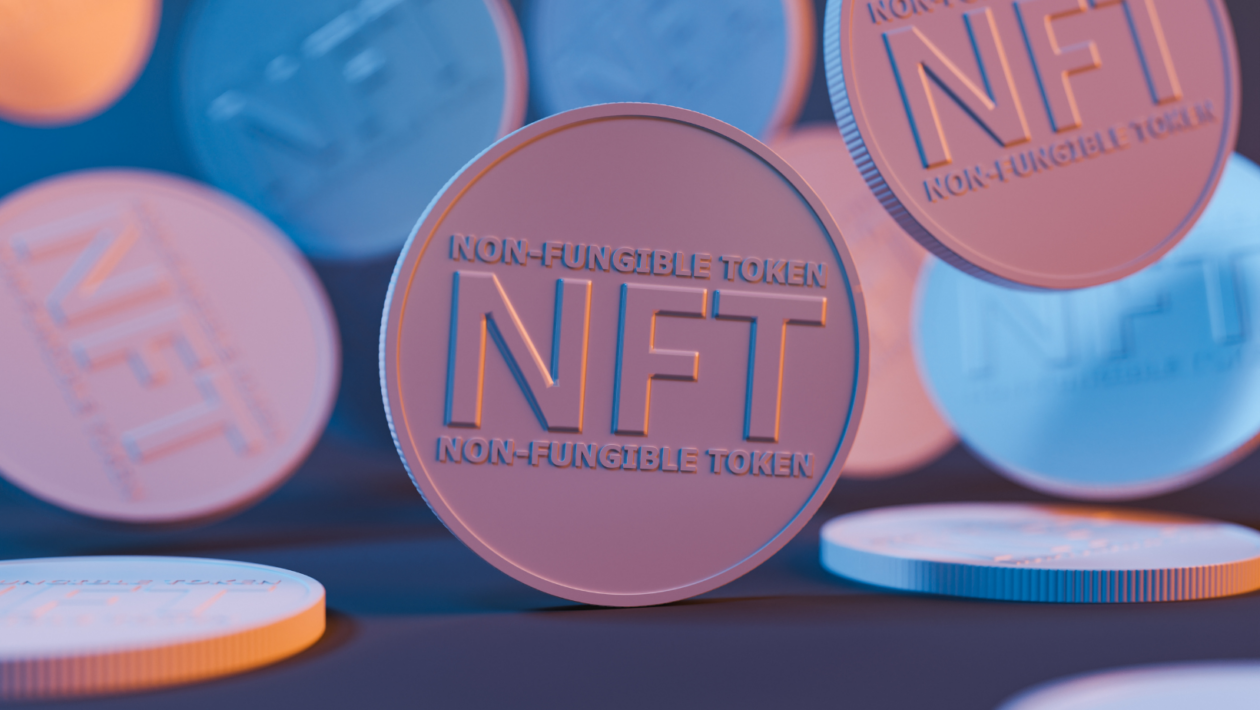Early in 2021, Kiki Wu stumbled across a room on Clubhouse talking about non-fungible tokens, or NFTs.
Inside the room, a group of artists who identify as non-binary and transgender were discussing how the technology — which can provide digital certificates of authenticity for artwork, music and videos — could open doors for marginalized artists around the world. Unlike the traditional art world, where galleries and auction houses play gatekeepers, any artist can put up an NFT for sale on a major NFT marketplace.
“They gave me a feeling that, with NFTs, you omit the role of the middleman, you omit the role of the art curator, and you have the right to publish your own works of art,” Wu said.
Wu, who creates under the Twitter handle @UglyKiki, is a 28-year-old digital media artist based in San Francisco. As an artist and gender rights activist, she grew up surrounded by technologies like computer graphics and video editing that she later used to create artwork about feminism, LGBTQ and gender rights.
So when she heard about NFTs, she quickly figured that it could be a way to reach more people, especially for female-identifying and ethnic minority artists like her in the U.S. who wish to gain a bigger following.
She started creating her NFT artworks a few months ago. But while the decentralized technology promised an inclusive, diverse space where every artist is treated equally and could succeed, Wu quickly noticed that it is actually not all sunshine and daisies.
“The NFT market is dominated by men,” Wu said, in an interview with Forkast. “Of course, some of them have worked hard in the field for a long time, but are there really so few women in the NFT circle?”
Inequality and misogyny in NFT art
For some time, women have been severely underrepresented in the art world. Between 2008 and 2018, artwork by women represented just 2% of global art auction sales, according to a study by Artnet, a market data company, and In Other Words, a podcast and newsletter produced by Art Agency, Partners, an art advisory firm.
In comparison, female artists are faring better in the NFT world — but parity is still distant. According to a recent report published by ArtTactic, less than 16% of NFT artists on Nifty Gateway, one of the biggest curated NFT marketplaces, identify as female. They accounted for just 5% of all primary and secondary sales from January 2020 to September 2021, while male NFT artists made up 77%, at a figure of US$258.3 million. The remaining 18% are art collectives or artists who didn’t identify their gender.

The report also points to issues of broader underrepresentation in the NFT marketplace. According to the study, 55% of NFT art sales in the 21 months went to just 16 artists, of whom the majority are men. The only known woman that made it to the top ten list of NFT sales is the Canadian musician Grimes, at US$8.9 million. It is a fraction compared to the American digital artist Beeple, who rang up US$69.3 million alone from the sale of a single NFT.
A gendered market
Charlotte Kent, Assistant Professor of Visual Culture at the Department of Art and Design at Montclair State University in New Jersey and an expert on digital culture, points out that although NFT promises an inclusive space, gender disparity persists.
“There has been a bias in favor of white male art in the mainstream contemporary art market, they are sold for higher prices, they have been more collected by museums,” Kent said. “I think that the attention is going to those works is an issue, and that has to do both with the art market, but also the fact that the white male gaze has been deemed as the neutral or natural or normal position.”

The concerns reach far wider aspects than sales. In June 2021, “Misfit University” — a collection of avatars featuring university students — released a series of NFTs featuring female avatars with black eyes and mouths covered by duct tape. The images caused a firestorm for promoting “rape culture.”
Critics have also called out Beeple for incorporating sexist, racist and homophobic themes into some of the art pieces that make up his US$69.3 million NFT collage, “EVERYDAYS: THE FIRST 5000 DAYS.”
“One of the reasons I think this NFT moment is important is that it’s showing us that the gatekeepers are not the only problem,” Kent said. “If there’s more media attention to white male art production because it’s been selling for higher prices, because it’s getting more hits in the blockchain community, what that tells us is that we have still internalized a preference for a set of aesthetics that reiterate this white male history.”
NFT for social change
Some artists are pushing to diversify the male-dominated worlds of art and technology, not only through their presence but also the content of their work.
In December 2021, Drue Kataoka, artist and founder of Drue Kataoka Studios, launched the NFT project “Will Your Heart Pass the Test?” with the immersive experience studio ILMxLAB. The 3D-rendered art piece is inspired by an ancient Egyptian myth that if your heart is lighter than a feather, you could go to paradise.
For Kataoka, the artwork is a symbol of the racial and gender injustice she sees in her everyday life. It also reflects what she observed in the NFT space as people move capital around for fast money and focus on just the number but not the message or the values of the artwork.
“When it comes to NFT, you don’t necessarily need to have the funds to jump on a plane, get the expensive tickets to the right museum exhibition to go see a work of art. You have an internet connection and you can access a lot more art, [and] that’s really great,” Kataoka said. “But I think just because we have a new technology that has all sorts of possibilities attached to it, doesn’t mean that things are going to fall into place and work themselves out. If we really infuse these algorithms with vast stores of data that are degrading women, people of color, then we are going to reap what we sow.”
“Will Your Heart Pass the Test?” was auctioned by Phillips for US$252,000, and all proceeds from the sale went to Martin Luther King Jr. Center for Nonviolent Social Change and #StopAAPIHate.
“What I’m hoping to see is NFTs creating genuine social impact directly through what they’re funding, and also indirectly through the messages that they’re propagating,” Kataoka said. “Because art is something that I see as a time capsule, we put our best values and thoughts into them, and send them out as gifts into the future.”
A community-based future
Other women are coming together to build a more inclusive NFT space through collaboration and community.
Projects featuring diverse and powerful women avatars such as World of Women (WoW) and Women Rise, and Twitter communities such as @crypto_chicks are bringing together more and more female and queer NFT artists and collectors. Many of these communities also support education for minority artists.
“Even though blockchain is decentralized and distributed, and that the tech itself is distributed in a sense that there’s not supposed to be any hierarchies, what we are seeing is that nodes appear and winds up centralizing attention, and the only way to counter it is to work as groups,” said Kent, the art professor.
Wu is also among a growing number of artists advocating for other women to join the community. She now writes articles and gives lessons, trying to bridge the gender gap in the NFT space.
“A lot of women-led projects are about empowerment,” Wu said. “They give out scholarships to underrepresented artists, they donate proceeds to social good and education programs for women. This is very empowering.”
She is still optimistic about NFTs’ promises of a decentralized and more diverse future.
“As the entry threshold gets lower and lower, more women and minority artists will find their way through this medium, and let their voices be heard,” Wu said.




